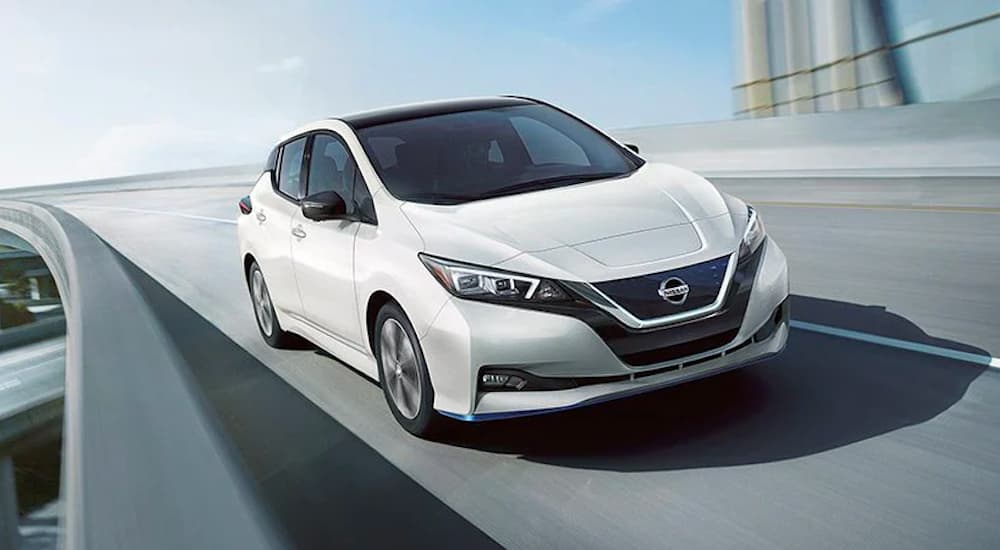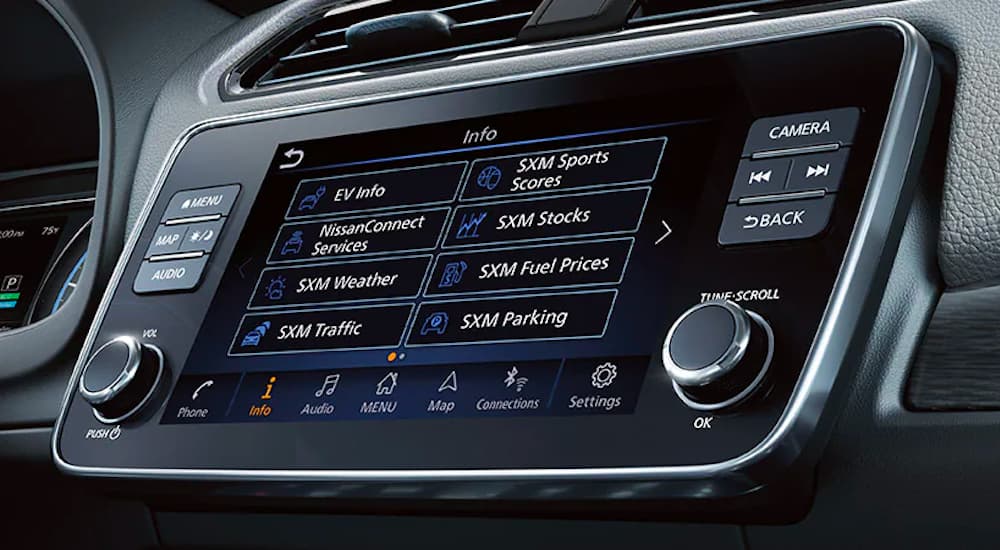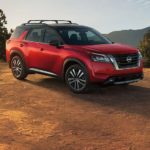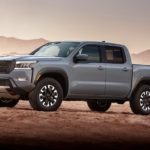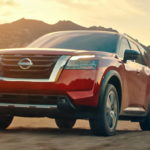Can you believe that the Nissan LEAF has been around since 2011? A lot has changed since the first all-electric Nissan rolled off the line and onto the streets. The world is a different place, and our attitudes towards electric vehicles (EVs) are significantly different. Of course, a lot has changed about the LEAF, as well. Back in 2011, the LEAF had a very limited range, so it could only do so much. The technology was still far too new, but the 2022 Nissan LEAF demonstrates how much the vehicle – and surrounding technology – have grown in the past decade.
With two offered battery pack sizes, three comprehensive trim levels, and more features than ever, it could be said that Nissan is turning over a brand new LEAF. Terrible puns aside, the LEAF has truly grown from an innovative novelty to a fully-developed and highly desirable electric vehicle. You may think you know the Nissan LEAF, but have you been introduced to the new and improved 2022 LEAF?
It Can Move
One of the early complaints from drivers regarding EVs was the lack of drivability. Electric cars weren’t fun in the traditional sense. They didn’t go “vroom,” they had a limited range, and you had to remember to plug them in when not in use.
All of these things are true. The 2011 Nissan LEAF was capable of going 0-60 miles per hour in 10 seconds with its 107 horsepower, but it physically lacked the equipment that makes the “vroom” noise. It could manage about 72-100 miles on a full charge, and the 110V standard household charger required an exhausting 20 hours to restore that full charge. Innovative? Yes. Practical? Not for all drivers.
Compare this, then, to the 2022 Nissan LEAF. As mentioned earlier, there are two battery options. The standard is a 40kWh battery that provides 147 horsepower and up to 149 miles of range on a full charge. Step up to the Plus models with their 62kWh battery and experience 214 horsepower and a range up to 226 miles on a full charge. The average 0-60 time is around 7 seconds. These numbers are very similar to what you might coax out of a smaller mid-range sedan. Better yet, you may never have to stop at a gas station in the middle of nowhere again. Well, not for vehicle fuel, at least.
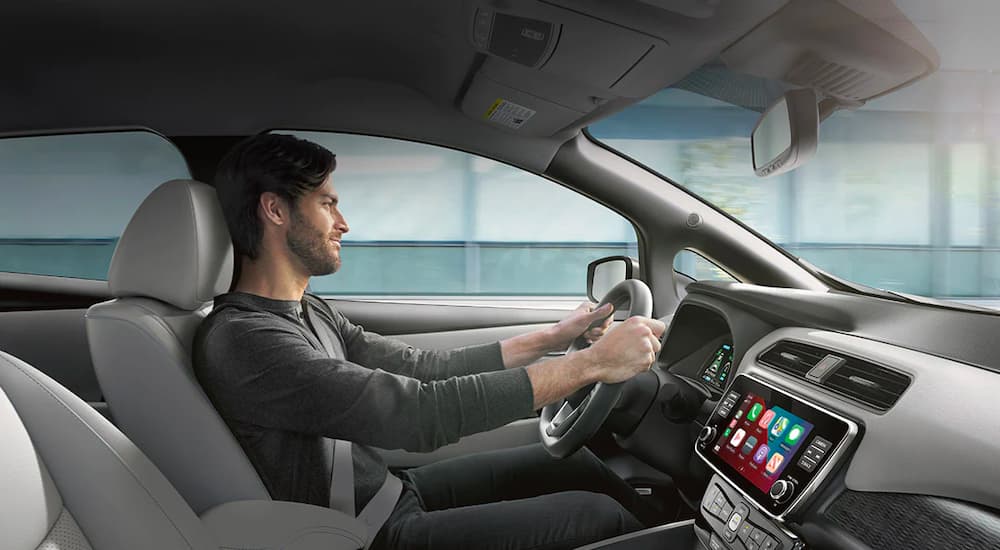
Plugging It In
Like the 2011 LEAF, the 2022 version does require drivers to remember to plug them in when not in use. Unlike the original version, it is not as dire or cumbersome to do so in 2022.
The basic 120V charging cable is offered, and the LEAF can be plugged into a standard outlet for what is known as “Level 1” charging. However, the Portable Charging Cable and a 240V outlet are the new standard. In their partnership with Qmerit, Nissan is helping customers arrange for the home installment of the 240V system in their home. Additionally, there are now over 30,000 “Level 2” public charging stations in the United States and nearly as many public DC Quick Charging stations. Charging your EV is no longer a process of limping from electric socket to electric socket but rather a quick glance at an app.
The 40kWh battery can reach full charge on the Level 2 charging system within 8 hours, and 80% charge with just 40 minutes on a DC Quick Charging station. Selecting the Plus versions of the LEAF and their 62kWh batteries does require a little extra charge time to get to a full charge. After 11.5 hours on the 240V pack, the Plus battery will have a full charge, but remember – that translates into nearly 100 miles more range.
Safety and Driver Assistance
You would be hard-pressed to find a vehicle that hasn’t upgraded its safety and driver assistance technology since 2011. Even the most basic of heavy-duty work trucks have rear view cameras these days, so it’s not surprising that a vehicle born of high-tech engineering has embraced the latest and greatest in the field of safety.
Nissan has developed the Safety Shield 360 suite of features to include the most popular and coveted safety features on all of its vehicles, and the 2022 LEAF is no exception. Automatic Emergency Braking with Pedestrian Detection ensures that anyone in front of you is safe from a forward collision. Rear Automatic Braking and Rear Cross Traffic Alert take over these duties when you’re headed in reverse. Blind Spot Warning and Lane Departure keep you from merging into trouble, while High Beam Assist makes sure your LEAF is courteous to other drivers on dark roads, even when you may forget.
The ProPILOT Assist program is also available on the 2022 LEAF. This technology allows drivers to allocate some of the hard stuff to the vehicle. You can program it to deal with stop and go traffic by setting a distance from vehicles in front of you. It can even keep your LEAF centered in its lane at all times. You’ll still need to drive it, of course, but in rush hour traffic after a long day, any little bit helps.
In-Cabin Features
Technically speaking, the 2022 Nissan LEAF is offered in five trims: the S, the S Plus, the SV, the SV Plus, and the SL Plus. The primary difference provided by the Plus version is the extended range 62kWh battery pack. Models without the “Plus” designation get the standard 40kWh battery.
Stepping back in time to the first LEAF, drivers had a choice of S, SV, and SL. Standard equipment included a six-speaker AM/FM/CD/MP3 audio system with USB and Bluetooth connectivity, fog lamps, and automatic headlights. Jumping ahead 11 years, quite a bit has changed. There’s some bad news about the CD and MP3 players, but otherwise, the changes are good. In addition to AM/FM radio and Bluetooth, the LEAF now offers SiriusXM radio, compatibility with Apple CarPlay and Android Auto, voice recognition, hands-free texting, and Siri Eyes Free, all coordinated through an 8-inch color touchscreen infotainment system. At the SL trim, the standard audio system is replaced with a Bose Energy Efficient Series Premium Audio System to cut down on the amount of energy the LEAF puts towards tunes.
Of course, a vehicle is more than its infotainment system. The 2022 LEAF offers some really practical points, as well. The rear seats are 60/40 split-folding to provide up to 30 cubic feet of cargo space. The front seats are adjustable bucket seats, which are heated in the SV and SL and leather-trimmed in the SL. The Nissan Intelligent Key provides a push-button start for convenience.
The 2022 Nissan LEAF Is So Much More
All told, the 2022 LEAF is very much like any other car on the road today. It goes just as fast and just as far, and it has the horsepower to accelerate politely and with zeal. It just requires 100% less fuel than those other gasoline-powered options.
For those who find the need to plug in onerous, perhaps now is not the time for your foray into EVs. However, for those who are ready to take the plunge, know that the 2022 Nissan LEAF makes the process easier than ever. Yes, you can plug it into a standard outlet. You can also contact Nissan for direct, professional assistance installing the Level 2 charger at your own home. You also have access to thousands of public chargers– far more today than were readily available in 2011.
Inside the LEAF, you may momentarily forget you’re in an electric vehicle. It has all the bells and whistles you’d anticipate in any hatchback. In fact, considering the driver assistance technology included with the standard Safety Shield 360 package, it may have quite a few more. After 11 years, the LEAF has become less of a novelty and more of an industry leader. It will be interesting to watch the Nissan brand of EVs continue to grow and develop now that the electric vehicle is decidedly the way of the future. Until then, the LEAF is a solid foundation on which to grow.
